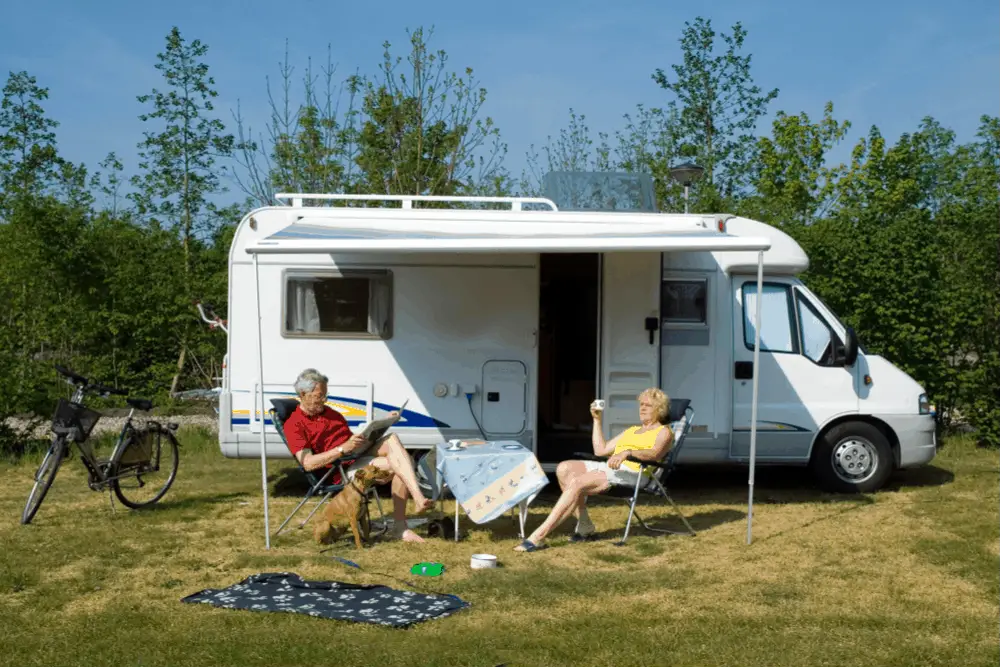Spring is coming. The weather is becoming nice and warm. If you are an RV owner, you must have taken quite a long time to winterize your RV to protect it from the cold weather. As the time is coming for you to hit the road again, you are probably thinking about how to de-winterize your RV.
There are several steps to de-winterize your camper. You have to thoroughly examine the exterior and interior of your RV, and take special care of the water system. You also have to check the tires and batteries to make sure they are ready for your new journey.
In this article, I am going to talk about the main steps of de-winterizing your RV. Follow these steps and improve the condition of your RV to make your spring journey easy and comfortable.
De-Winterizing Your RV
Before you learn how to de-winterize your RV and fix all the issues, you should get all the necessary items and chemicals. So, you should check the interior and exterior of the RV to get all the things according to the problems.
Here is a list of items that can be helpful:
- Battery Charger
- Air compressor
- Air filters
- Tire pressure gauge
- Garden hose
- Damp sponge
- Bleach
- Flashlight
- Potable water tank
- Vacuum cleaner
- Propane tanks
- Latex gloves
- Safety glasses
- Rag or Towel
- Toilet Chemicals
- Lots of water
After getting all the items, you can start working on your RV. You can start checking things one by one according to your preference.
Checking the Tires
Your RV might have been sitting idle for weeks or months now. You probably have winterized your RV and parked it in the garage. Or, you have parked it somewhere safe outside.
The RV has been sitting idle but does not think that the tires are alright. The cold winter affects the tire somehow no matter how much preparation you take. The tires will lose pressure and even more when you keep the RV outside.
So, check your tires because your safety depends on them. Do not depend only on your instincts. Use a tire pressure gauge to check the air pressure of all the tires. If your RV has a manufacturer’s guide, see tire pressure recommendation. Then, inflate the tires accordingly. If the tires are old and used for a long time, it is better to change them with new tires.
Checking the Exterior of RV
Start inspecting your RV’s exterior. If it has been sitting outside for a while, it may have gone through some external damages. Check for leaks, holes, and cracks, especially on the roof. Here is what you can do:
- Get your garden hose pipe and clean the exterior of the RV.
- Check for holes, cracks, and leakages
- Open and close all the windows and doors to check if they are working properly.
- Take necessary steps to repair the issues you find
- Check all the seals around the windows and vent to fix them.
- Inspect the vents and air conditioner for bird nests or insects.
- Clean your solar panels.
- Finally, if you need to put on some stickers, apply them after the RV is fully dried.
De-winterizing RV Interior
After taking care of the exterior, go inside and carefully inspect every nook and corner of the RV. Insects and small animals might have infested your RV. So, get rid of them. Use a vacuum cleaner to clean the floor and the carpet. Then wash the floor.
Check the ceiling of the RV, and if you see any damage or declaration, it means the roof leaks. So, fix that as soon as possible. Next, open the cupboards and drawers to clean them. Look under the bed and tables to clean them.
Remember to clean the water and air filters. Finally, clean the window screens with a duster or use a vacuum cleaner.
Cleaning and Sanitizing the Water System
One of the most important parts of de-winterizing your RV is cleaning the water system. Like any other RVer, you must have used antifreeze in the water system to protect the pipes.
You have to have clean and safe water to drink, wash and cook on your trip. So, cleaning the antifreeze from your water system is very crucial.
Follow these steps to free your RV water from antifreeze:
- Turn on the water pump and open all the water faucets in your RV.
- After a while, flush your toilet a few times to check the cleanness of the water.
- Keep the pump on, and the faucets open until the water is clear.
- Turn off the faucet and pump when you get clean water.
- If you had put the heater on bypass, then take it out of mode.
- And if you have not put the water heater on bypass mode, you have to clean the antifreeze from there too.
- You must have removed the water filter cartridges when you were winterizing your RV. Reinstall them or replace them with new ones.
Cleaning the antifreeze out of your water system is not enough. You also need to sanitize the entire water system. You may not have used any antifreeze for winterizing, but bacteria and molds can grow in the water tank and pipes.
Therefore it is better to use sanitizers for your RV water system. You can use household bleach or buy sanitation solutions from the market. Mix the solution with the freshwater tank, and run all the faucets again until the smell of the bleach is gone.
Recharge the Batteries
If you have been checking and recharging the RV batteries timely during the winter season, then it will not be much of a problem for you. But without proper maintenance, the batteries will slowly lose some charge, or they may leak.
So, check the charge of your batteries using a voltmeter. If the battery charge shows below 12-volt, you should charge the batteries. When you charge the batteries, check the water level and add distilled water if the water level is low. While installing the batteries back in the RV, check the connection of the battery.
Checking the Engine
All these preparations to get your RV on the road again will be in vain if the engine fails to work properly. The fluid levels of the engines have to be refilled to make them fully functional. Also, check the steering, brakes, windshield, radio transmission, and the lights (headlight, tail light, dash lights).
However, if you are not sure about your technical skills, you can hire someone to check and fix these issues for you. The performance of your engine has to be good enough to run the RV for a long time.
Some Tips on De-Winterizing Your RV
Here are some extra tips on making sure your RV is ready to hit the spring roads –
- Check all the water pipes for leakage.
- Examine the propane tanks for leakage
- Make sure the propane is getting electricity
- Recharge the Generator or other forms of power management systems.
- Check all the safety devices and install new ones if necessary.
- Check the electric lines and all the power supply lines of the RV.
- Buy all the first aid emergency supplies.
- If you are bringing out things like towels, pillows, bed sheets, blankets, and towels, clean them properly and dry them in the sun to get rid of bugs and molds.
- After all the fixing and cleaning are done, update the registration and insurance papers of your RV.
Conclusion
By now, you must have a clear idea about how to de-winterize your RV. So, get all the necessary items and follow the steps I’ve provided in this article. Your RV will be ready for a new adventure in the coming season.
Thanks for reading till the end. Have a great day.


